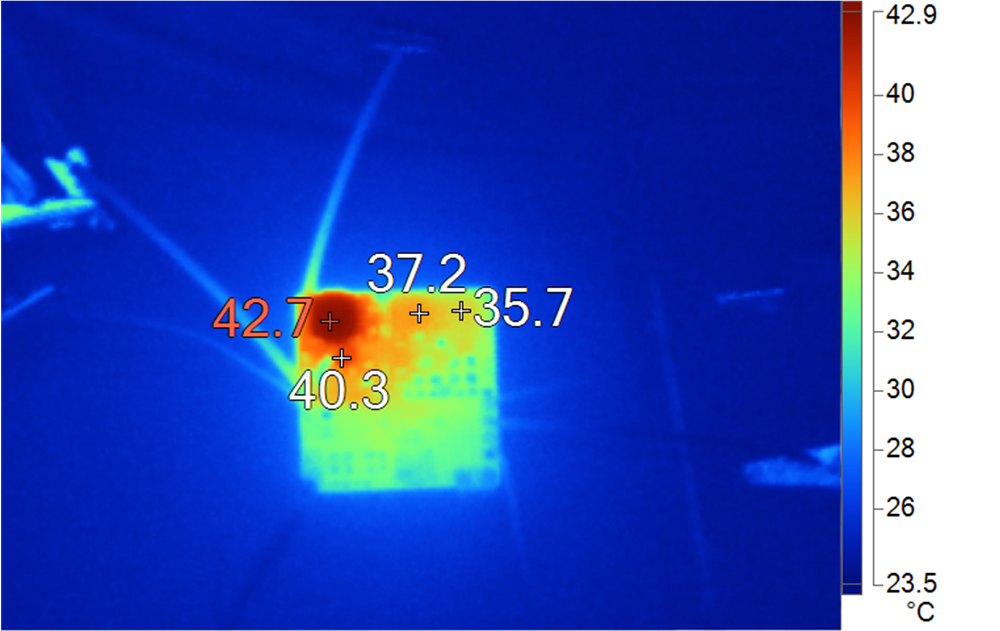SLVAFE7 September 2022 LM51551
3.6 Thermal Image
Figure 3-15 shows the thermal image of the high-voltage power supply board after testing for 20 minutes. With the 12-V input, ±75 V/1.5 W output operation, the maximum temperature is 42.7°C in the top side at an ambient temperature of 22°C.
 Figure 3-15 Thermal Performance of the
Design
Figure 3-15 Thermal Performance of the
Design